
Pre- & Post-Surgery Eye Exams: Convenient Care
Patients that have had laser corrective eye surgery or that wear contact lenses have additional eye care requirements. Accordingly, for these patients, our optometrists perform several tests and assessments in addition to those included in our comprehensive eye exams. These tests and assessments evaluate the recovery of the corneal surface, detect symptoms that may surgical intervention, and monitor conditions that may pose risks to ocular health and vision following contact lens wear or corrective laser eye surgery.
Schedule An Exam Our Optometrists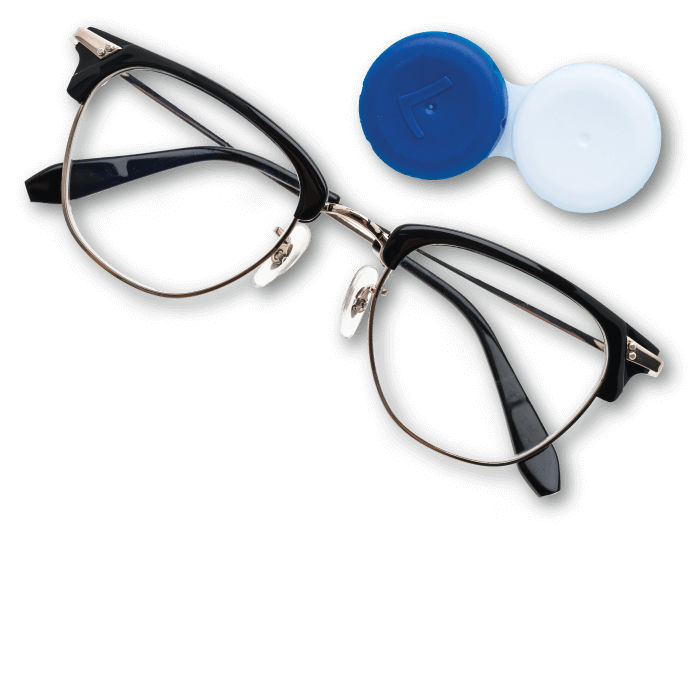
(780) 473-6123
Eye-deology Vision Care
Contact Lenses: A Different Type of Eyewear
Because contact lenses sit directly on the eyes, they can damage the cornea and prevent sufficient oxygen from reaching the cornea. As a result, for patients that wear contact lenses, our optometrists regularly perform the following tests are part of their comprehensive eye exam:
- Confirm Current Contact Lenses;
- Check Contact Lens Fit Assessment;
- Re-Fit Contact Lenses (If necessary. Additional Fees May Apply);
- Fluorescein Eye Stain Test;
- Examine the cornea for new blood vessels;
- Flip eyelids to check for allergy bumps; and
- Evaluate vision with contact lenses on and over-refract.
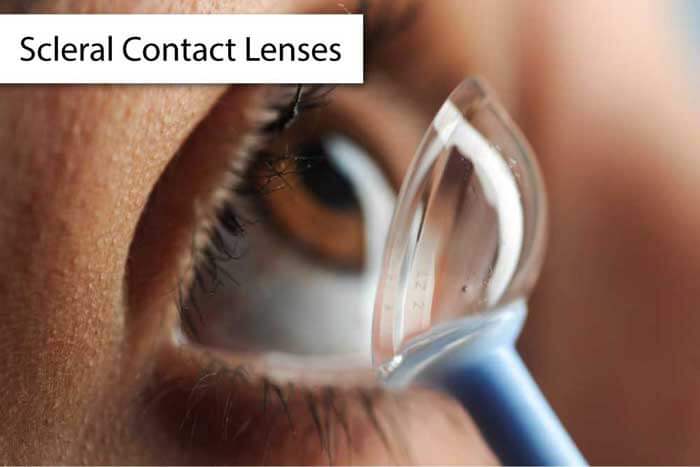
Eye-deology Vision Care
Contact Lens Exam: Confirming Brand, Type & Parameters
It is essential to accurately determine the brand, type, and prescription of contact lenses that a patient is currently wearing. Because it is not uncommon for patients to not know the details of their contact lenses, diagnostic lenses with the last prescribed parameters are issued to the patient to wear. That permits our optometrists to evaluate vision, fit, and health against a known suite of contact lens parameter benchmarks.
Schedule A Contact Lens Eye Exam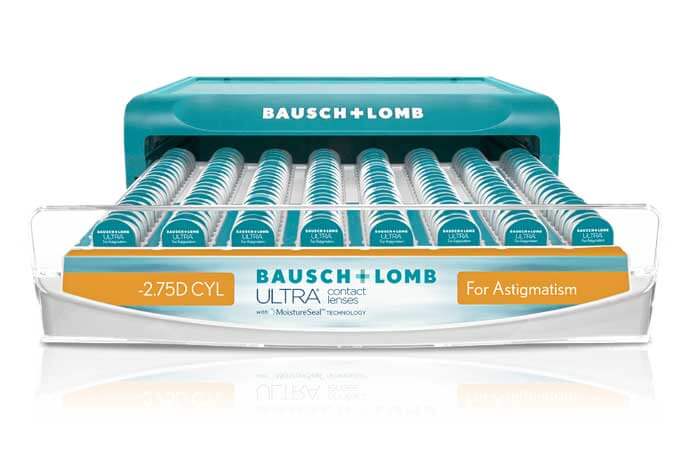
Eye-deology Vision Care
Contact Lens Exam: Fit Assessment
Cornea shape can change over time, and contact lenses are not a one-size-fits-all product. Corneal changes can result in poor fitting contact lenses, which in turn can cause discomfort, poor vision, and dry eye syndrome. A contact lens assessment evaluates the shape and size of the eye (and its surface) to ensure that the contact lenses are centred on the eyes and move appropriately. Pupil and iris size assessments complement evaluations of the cornea. These assist in determining the proper sizing of lenses so that they look natural against the eye.
Schedule A Contact Lens Eye Exam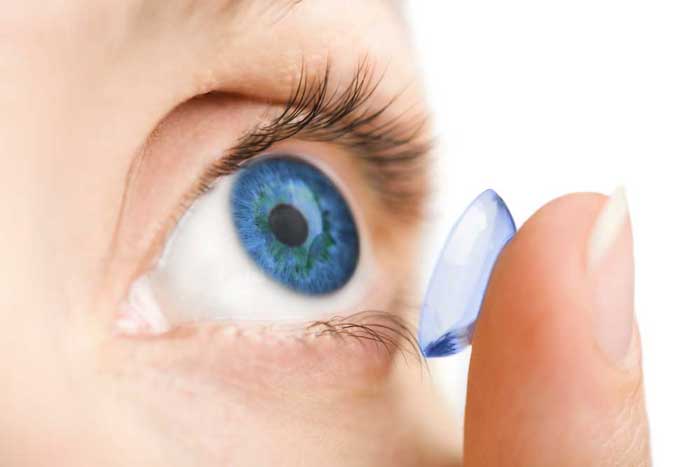
Eye-deology Vision Care
Contact Lens Exam: Dry Eye Assessment
One of the issues contact wearers face is the development of dry eye syndrome. When the eyes do not produce sufficient moisture, they become red and irritated. If left untreated, dry eyes can damage the surface of your eye, which can, in turn, lead to painful infections. The optometrist will use a small strip of paper placed underneath your lower eyelid to evaluate tear production.
Schedule A Contact Lens Eye Exam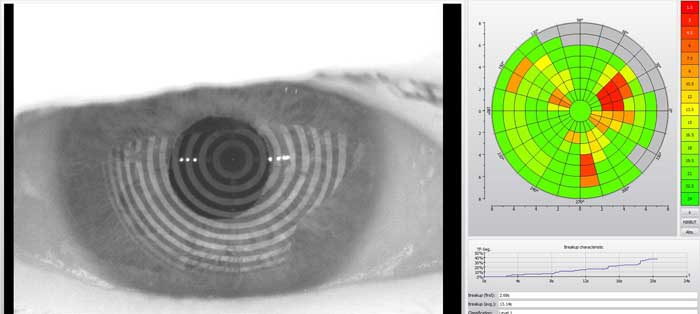
Eye-deology Vision Care
Contact Lens Exam: Re-Fitting (If Necessary)
Contact lens refitting is necessary when a prescription significantly changes or when changes to cornea shape/size occur. Also, when symptoms of dry eyes develop, additional tests are required to determine treatment.
eye-deology Vision Care optometrists use the latest corneal topographer technology to map the cornea surface and determine the best contact lenses for patients. Our optometrists also use the latest dry eye diagnostic technologies to evaluate tear film break-up, tear meniscus levels, and meibomian gland health.
Schedule A Contact Lens Eye Exam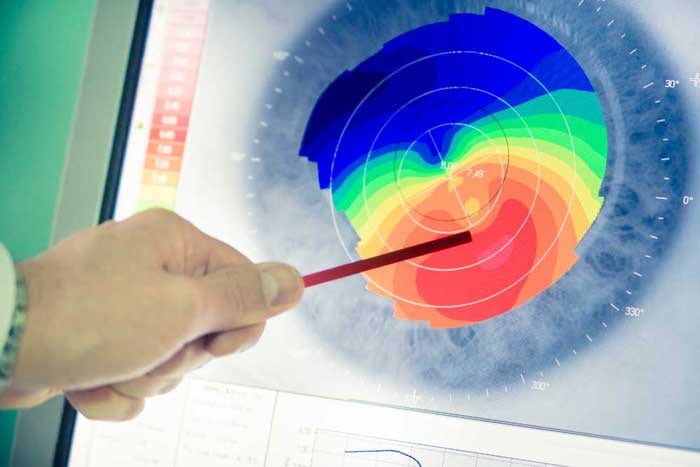
Eye-deology Vision Care
Contact Lens Exam: Fluorescein Eye Stain Test
Improperly wearing contact lenses can damage the eye. Poorly fitting, poorly maintained, and incorrectly worn contact lenses can harm the eye. The fluorescein eye stain test uses orange dye (fluorescein) and blue light to detect damage to the cornea - the eye surface.
During the test, dye is applied to the cornea using a piece of blotting paper. The patient then blinks. Blinking distributes the fluorescein dye and coats the tear film covering the surface of the cornea. The optometrist then shines a blue light at the eye. Any damage to the cornea surface becomes stained by the dye and appears green under the blue light. The doctor can determine the location and likely cause of the issue based on the size, location, and shape of the staining.
Schedule A Contact Lens Eye Exam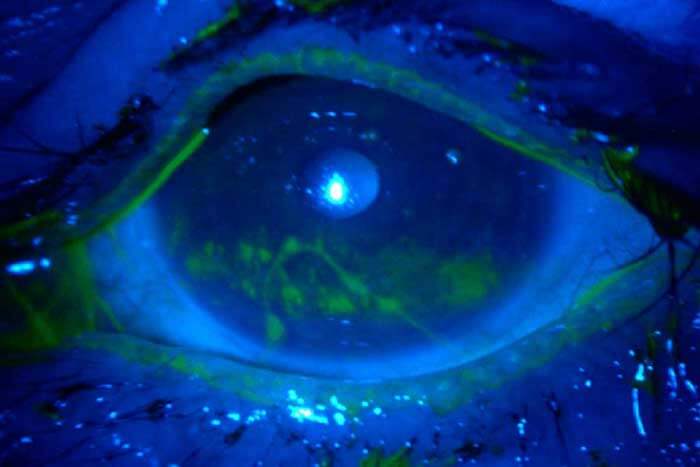
Eye-deology Vision Care
Contact Lens Exam: Examine Cornea For New Blood Vessels
Although possibly caused by an infectious inflammation or an injury, most corneal neovascularization cases today stem from the inappropriate use of contact lenses. If contact lenses are not exchanged frequently, are left in at night too often, or are not gas-permeable, then the amount of oxygen absorption is limited. The growth of the new blood vessels is then usually accompanied by inflammation. An inspection with a slit lamp carried out by an optometrist is used to determine the presence of any corneal neovascularization.
Schedule A Contact Lens Eye Exam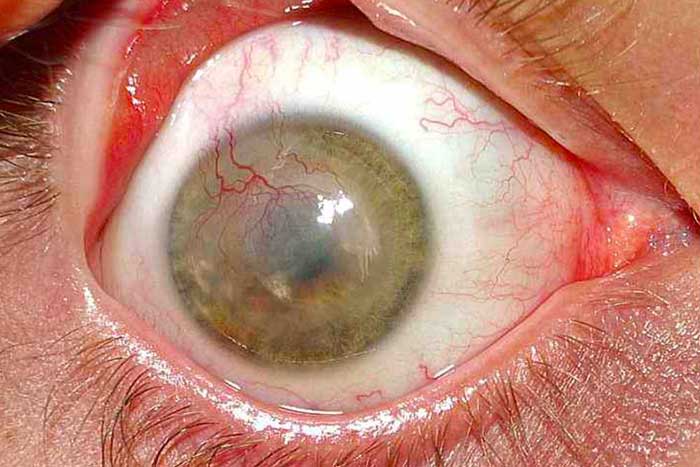
Eye-deology Vision Care
Contact Lens Exam: Inspect For Allergy Bumps
Giant papillary conjunctivitis, commonly referred to as GPC, is a condition in which the inner lining of the eyelid becomes inflamed, and small bumps develop. These small bumps, known as papillae, often form in response to some form of chronic irritation, like wearing contact lenses.
To inspect for bumps, the optometrist will flip your upper eyelid outward so that the conjunctiva – the inner lining of the eyelid – can easily be observed. The eyelid flip is painless. The optometrist may use a yellow dye to temporarily stain the lid tissues and assist in making a diagnosis.
Schedule A Contact Lens Eye Exam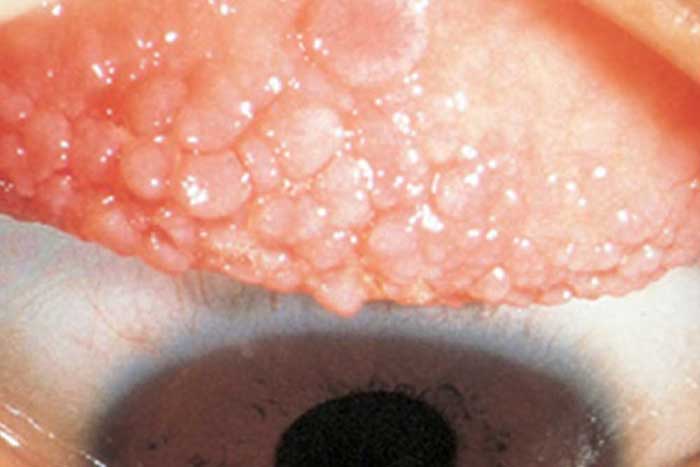
Eye-deology Vision Care
Contact Lens Exam: Evaluate Vision With Contact Lenses
An eyeglass prescription is not the same as a contact lens prescription. As a result, it would be incorrect to assume that the parameters prescribed for eyeglasses will be the same as those needed for an individual to see their very best with contacts lenses.
Over refracting is the process of determining the residual error of refraction of the eye while the patient is wearing contact lenses. In other words, it is the process of determining how well the patient sees with their contact lenses. Over refracting requires the optometrist to evaluate vision with the phoropter a second time.
Schedule A Contact Lens Eye Exam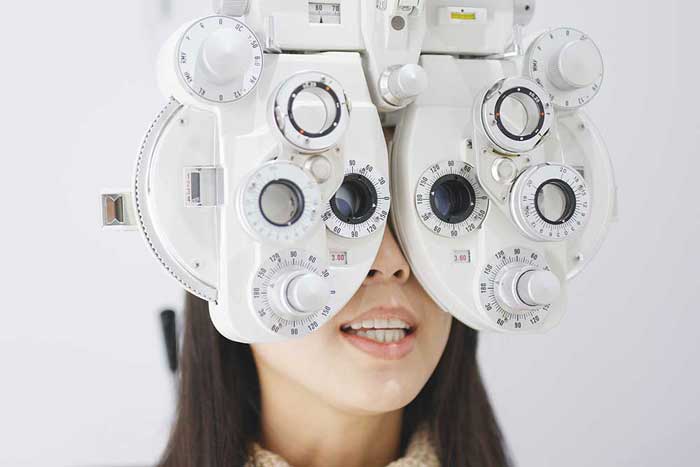
Our Edmonton Optometrists
Searching for an optometrist in Edmonton? Our experienced Edmonton eye doctors use advanced modern technologies and devote upwards of 500% more time towards providing personalized patient care than elsewhere so that they can see more and ensure that you may never see less. Position yourself to see the future with a visit to our eye clinic and Edmonton's best eye care!

Dr. Jennifer Ash, OD
Dr. Jennifer Ash is the Resident Optometrist at Eye-deology Vision Care. Dr. Ash provides patient care 5 days a week. Read more about Dr. Ash.

Dr. Ruhee Kurji, OD
Dr. Ruhee Kurji is an Associate Optometrist at Eye-deology Vision Care. Dr. Kurji provides patient care Tuesdays & Fridays. Read more about Dr. Kurji.

Dr. Jade McLachlin, OD
Dr. Jade McLachlin is an Associate Optometrist at Eye-deology Vision Care. Dr. McLachlin provides patient care 5 days a week. Read more about Dr. McLachlin.

Dr. Tania Mathews, OD
Dr. Tania Mathews is an Associate Optometrist at Eye-deology Vision Care. Dr. Mathews provides patient care 2 days a week. Read more about Dr. Mathews.
Learn Why Our Edmonton Optometrists Are The Best!


